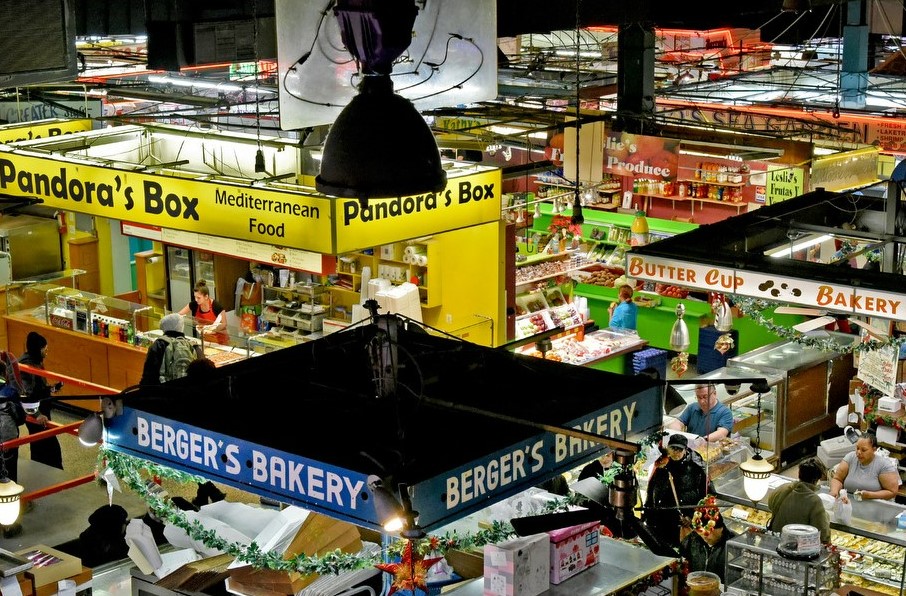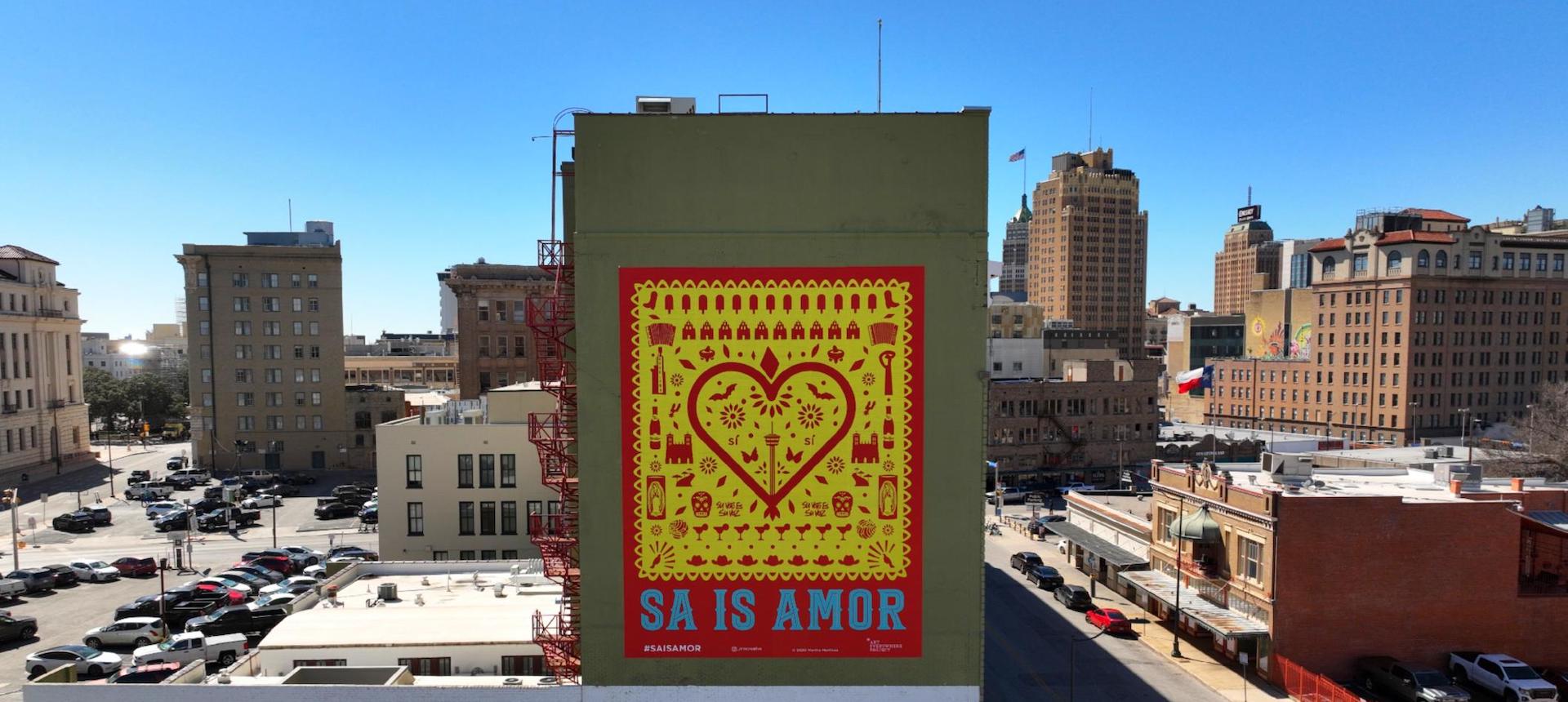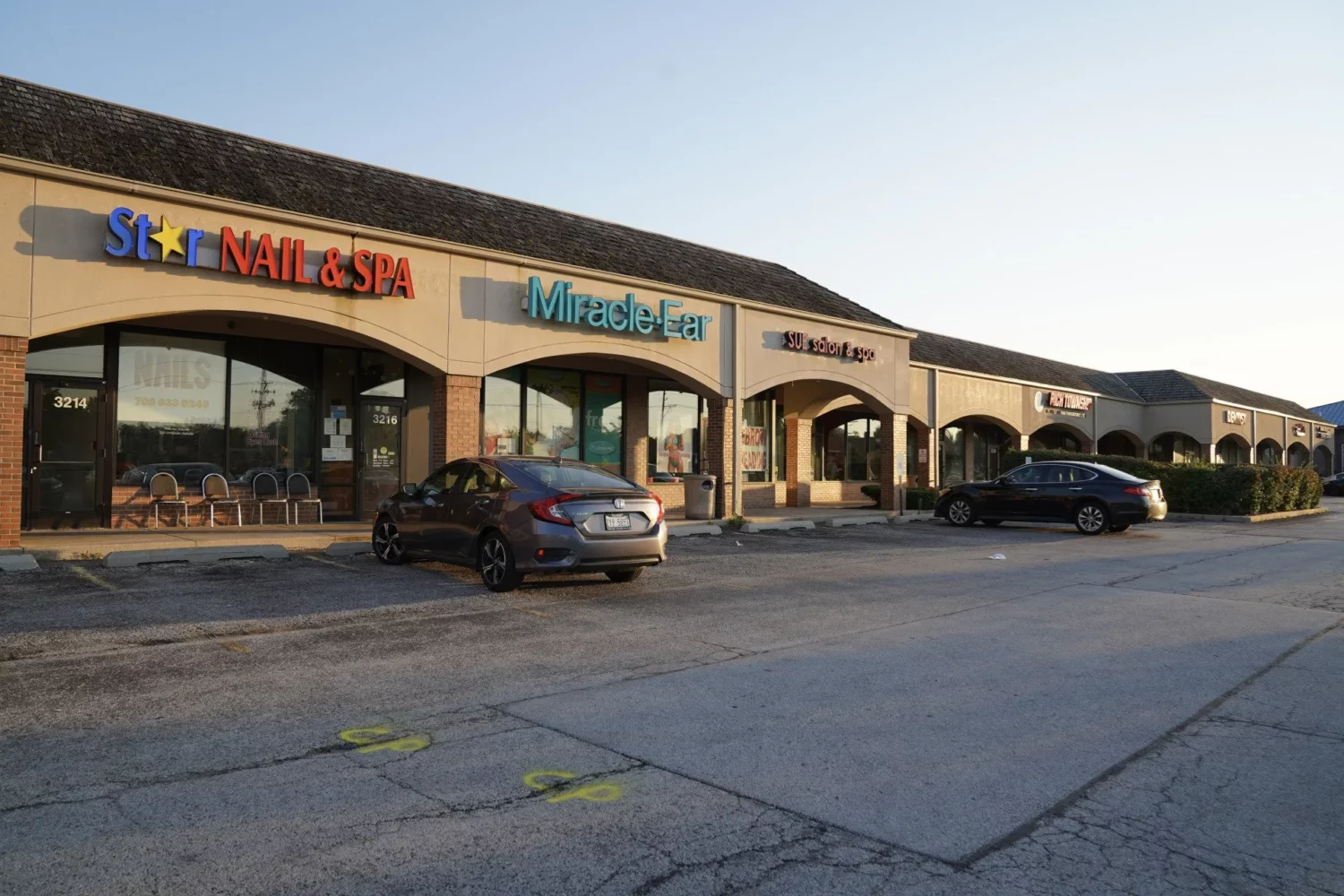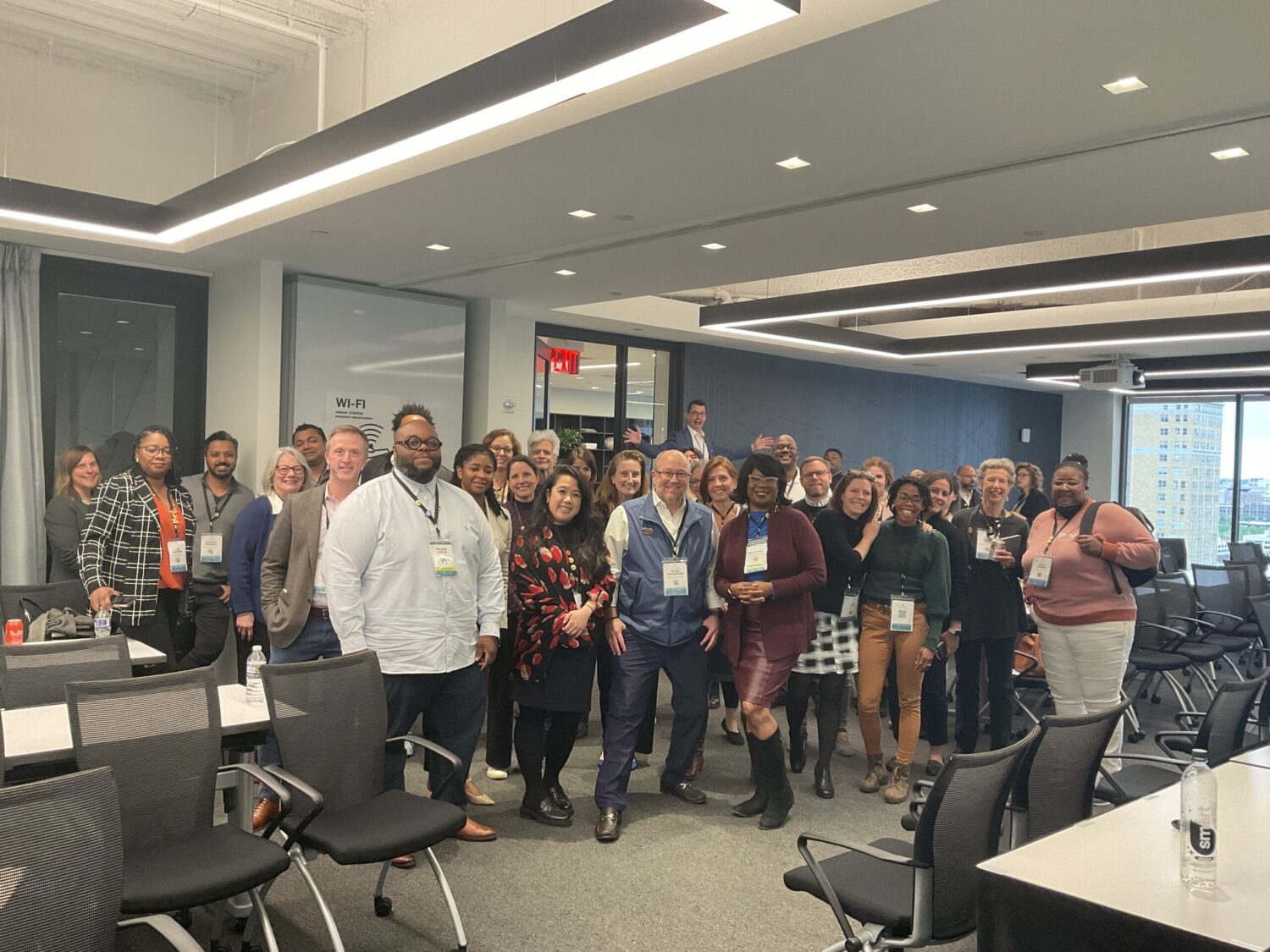ImpactAlpha, December 1 – On the west side of downtown Baltimore, a $45 million rehabilitation of Lexington Market is turning the once-languishing food hall, and long-ago hub of the slave trade, into a community market that reflects that city’s diverse demographics.
In the neighborhood of Poppleton further west, a much-needed fresh foods market along with mixed-income housing and investments in small businesses are rising in a designated Opportunity Zone, which has attracted impact investors. Minority-owned Market Fresh Gourmet, a minority-owned Baltimore grocery chain, will open an 8,000-square-foot store in the Center\West project.
And on the east side’s Oliver, Greenmount West and Johnston Square neighborhoods, nonprofit ReBUILD Metro is supporting the rehabilitation of vacant and distressed buildings, then helping local residents buy them at a discount.
Baltimore, the once-thriving East Coast manufacturing hub and port city, is serving as something of a proving ground for developers, public institutions and private investors. Creative models and impact capital are putting Baltimore on the map as a testbed of urban development initiatives that narrow rather than widen racial wealth gaps.
“Baltimore is propelling inclusive economic growth that can be a model for the region and the country,” says Mission Investors Exchange’s James Wahls. The network of “mission investor” foundations and other asset owners meets in Baltimore next week to share “powerful examples of impact investing in action,” as Wahls says.
Community engagement
“Charm City,” as Baltimore is known, is one of the few cities in the U.S. that is losing population. The city has struggled to reinvent itself since the collapse of manufacturing in the 1970s and 1980s.
The new efforts build on the critical economic blocks that remain. Education anchored by the University of Maryland, and health care, anchored by Johns Hopkins’ and UM’s medical systems, bring jobs and talent across a growing footprint in Baltimore. They also bolster the city’s small business community: Lexington Market’s food vendors serve the nearby UM Medical Center and surrounding community, and in southwest Baltimore, where companies like Up to Date Laundry are serving the city’s healthcare providers and creating local jobs in the process.
Developers and investors are leveraging proximity to these institutions to build housing, retail, fresh foods and community services to many of the city’s neglected neighborhoods.
The new Lexington Market, for example, sits adjacent to its old site on Lexington Street in the city’s struggling downtown corridor.
“Downtown Baltimore—it’s an arts district, it’s got great historic architecture, it’s got small businesses, but it’s also got a lot of vacancy and a lot of issues,” says Colin Tarbert of Baltimore Development Corp., the city’s economic development agency, which led the publicly-owned market’s rehabilitation initiative.
The “big vision,” for the project, says Tarbert, was to build from the market’s historic presence and UM’s proximity to foster “a thriving, diverse neighborhood, because there’s just so much variety and uniqueness in that part of the city.”
The new hall contains more than 40 food stalls, half of which are leased to Black business owners. That’s up from 5% in the old market. Half of the vendors are women.
The site also contains a public events space and outside area for hosting, among other things, a farmers market to bring fresh foods into a local food desert.
What made the project possible was a mix of funding from New Market Tax Credits, city and state grants, $2 million in funds from the American Rescue Plan Act and private debt. Some of the capital was used to help vendors build out their stalls without having to lay out much capital upfront. Baltimore Community Lending, a local community development financial institution, provided low-interest loans to a number of the market’s new vendors.
Lexington Market’s redevelopment has been more than a decade in the making. In 2018, Baltimore Development Corp. tasked local real estate developer Seawall Development with leading the refurbishment effort. Seawall pegs itself as a community-centric developer.
“We really believe that re-imagined real estate can unite cities,” Seawall co-founder Thibault Manekin said when the company was initially selected for the Lexington Market project. “Of all the projects we’ve ever had the opportunity to work on this is the one that’s going to prove that the most.”
Residents of Baltimore were nevertheless skeptical. Seawall had developed R House, another city marketplace, in the fast-gentrifying neighborhood of Remington. Baltimoreans worried the new Lexington Market would be built for young professionals and other wealthier workers and residents over Baltimore’s low-income Black workers and residents.
Seawall engaged the community and developed a project plan that reflected wishes from “people at the town hall meetings [who] wanted the refurbishment to be reflective of the city and serve the city,” Tarbert recalls.
“It’s a public market,” he says. “It belongs to the city.”
Local jobs
Boston-based Arctaris Impact Investors provided debt and equity financing to the Market Fresh Gourmet grocery store opening in the mixed-use development project in the neighborhood of Poppleton as part of its strategy to address food deserts.
Arctaris’ Uche Osuji recalls visiting Poppleton several years ago and seeing fresh foods being carted in and sold by horse. “Seeing a horse-drawn carriage on the streets of Baltimore in 2018 definitely catches your eye. It just goes to show how much of a food desert Poppleton was.
The store is expected to create 45 local jobs. Arctaris’ investment in the business is ultimately expected to create up to 200 jobs through additional store openings in the city.
Acrtaris invested in Market Fresh Gourmet via its $25 million commitment to invest in Baltimore’s underserved Opportunity Zones and neighborhoods.
The Opportunity Zone legislation was included in the 2017 tax law, giving real estate and other investors capital gains tax breaks for investing in underserved areas. Most of the focus has been on new development.
But the law also provisioned investments in businesses in underinvested communities. Arctaris’ Baltimore portfolio includes Market Fresh Gourmet, minority-owned Up to Date Laundry, and staffing and tech services firm Chime Solutions, among others.
“Where we’re focused is cities that are rich in assets,” says Osuji. “We’re not trying to build bones. The bones need to be there. That’s why Baltimore is high on our list.”
Inclusive wealth creation
Too often, the flip side of development has been displacement, as gentrification raises rents and outside developers reap the windfall of rising property values.
In the Oliver, Greenmount West and Johnston Square neighborhoods in East Baltimore the nonprofit ReBUILD Metro is focused on equitable wealth creation by enabling long-standing city residents to get a slice of the upside in Baltimore’s housing market. The organization aims to offer an alternative model for neighborhood revitalization efforts that displace long-standing residents or exclude them from the wealth created around them.
Sean Closkey, a New Jersey and Philadelphia real estate veteran, launched ReBuild in 2006 as a collaboration between local faith institutions and the community development financial institution, Reinvestment Fund. Its goal: to “revitalize communities by building on the strength of local assets and community leadership.”
ReBuild has completed work on more than 1,000 homes in East Baltimore and brought retail, community resources and green space into once neglected parts of the city. Its projects have reduced vacancy in Oliver and Greenmount West by more than 90% and 75% respectively. Work in Johnson Square, a $160 million effort that began in 2020, is still underway.
That redevelopment work has given refurbished homes in the area an enormous value boost—up to $160,000 from as little as $5,000, says John Muchai of Baltimore Community Foundation, which made a $100,000 investment in the ReBUILD’s work and mobilized an additional $1 million from its network of donors. ReBUILD Metro has supported community residents in buying the rehabbed homes at a steep discount.
“ReBUILD has been able to control the affordable housing in those neighborhoods, making sure people who live there can continue to live there,” Muchai says, compared to other neighborhoods in Baltimore like Canton in the south and Charles Village in the north, where long-time residents have gotten priced out of housing because of gentrification. “If you’re not intentional or thoughtful about development, then by default that will be the end result.”
ReBUILD’s homeownership model requires homeowners to own and live in the homes for a specified number of years–a provision that is meant to shield the new asset owners from “cash for homes” and other potentially predatory real estate investors, Muchai explains. It also allows them to build equity and accumulate home value.
In all three ReBUILD neighborhoods, that’s happening. For example, Ryan Homes, a mainstream residential real estate developer has recently become active in the area. Property values have, in some cases, tripled as a result.
“Now these areas make sense for private investment because of what ReBUILD has done,” says Muchai, “and a house that a Black family bought for $100,000 with grants and subsidies is now worth $450,000.
“It’s a phenomenal idea,” he says of ReBUILD’s model, “because all of that wealth has been created for people who were very strategically picked to be included in it… And now you have more diverse communities, too, not only in terms of race but economically.”
ImpactAlpha is the media partner for MIE’s national conference in Baltimore, Dec. 5-7. MIE members and philanthropic asset owners can register here.











